Domain Rating vs. Domain Authority
DA and DR have their own unique calculations, but both are regularly used in the SEO industry to represent ranking potential. Here’s what you need to know about these two site authority metrics.
Domain Rating (DR) and Domain Authority (DA) are two metrics SEO experts rely on to understand the authority of websites. SEO strategists regularly use DA and DR as key performance indicators for their campaigns or to benchmark how websites measure up against competitors.
DA and DR are separate authority scores with their own unique calculations, but both are regularly used in the SEO industry to represent ranking potential. In general, high DA and high DR scores are seen as reliable predictors that a website will perform well in search results.
As a result, many SEO professionals have posed the question of which metric is more reliable. Is DA or DR more accurate in predictions of better SEO performance? These questions are not answered in the below study, but we set out to compare DR and DA metrics and to better understand their relationship to other SEO performance indicators like organic traffic.
What is Domain Authority?
Domain Authority is a metric created by Moz that predicts the ranking potential of a website. It is scored on a 0-100 scale. According to Moz, the higher a domain’s DA score, the more likely web pages from that domain will rank well in search engine results.
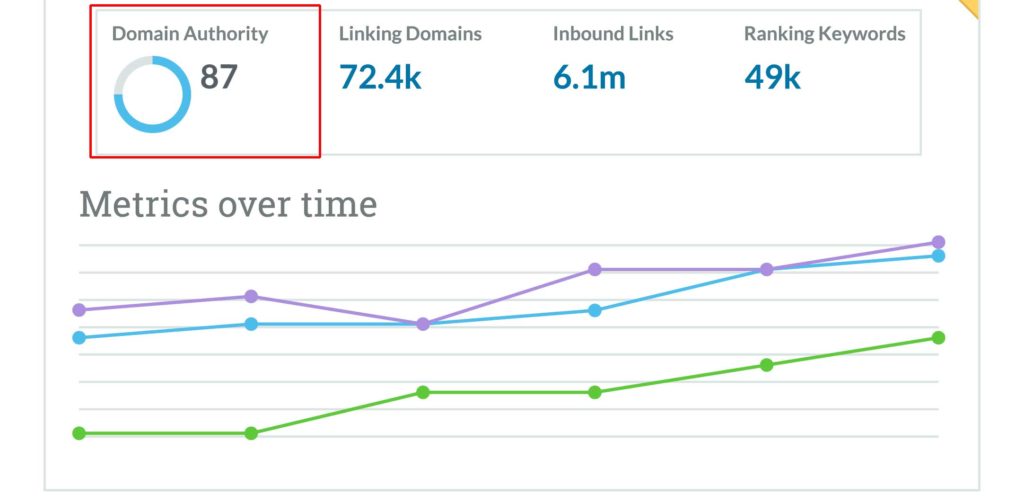
DA is calculated by evaluating several factors, but most significantly, the inbound links pointing to a domain. The link data used to calculate DA scores comes from Moz’s Link Explorer web index.
Domain Authority is designed to be a comparative metric, meaning earning a 100 score is not the ultimate goal. Site owners can use DA to measure the ranking potential of their own website in comparison to other domains in their industries.
What is Domain Rating?
Domain Rating (DR) is a proprietary metric from Ahrefs that is designed to measure the strength of a domain’s backlink profile via total number of backlinks and total unique referring domains. In addition to quantity, Ahrefs also considers the quality of the inbound links pointing to a domain while calculating DR scores.

DR is on a logarithmic 0-100 scale with higher scores indicating stronger, more robust backlink profiles. The link data used to calculate DR scores comes from Ahrefs’ large link index.
Unlike DA, DR is best described as a representation of backlink profile strength rather than ranking potential. But because backlinks and unique referring domains are some of Google’s top ranking factors, Ahrefs’ DR scores are also often used in the SEO community to quantify how well a domain will rank in search engine results.
DA/DR and Google
It’s important to note that neither of these metrics are Google ranking factors. However, because both authority metrics rely on similar factors that Google uses in their ranking algorithm, higher scores often have a higher correlation with better search engine rankings.
The Dataset
For this DR vs. DA comparison, we used the below metrics for 9,739 active websites.
- Moz Domain Authority Score
- Ahrefs Domain Rating Score
- Ahrefs estimated total monthly organic traffic from the top 100 search results
Domain Rating vs Domain Authority Scatter Plot
The below scatter plot charts Domain Rating and Domain Authority scores along with estimated monthly organic traffic. Organic traffic is charted on a logarithmic scale with green representing higher organic traffic and red lower organic traffic.
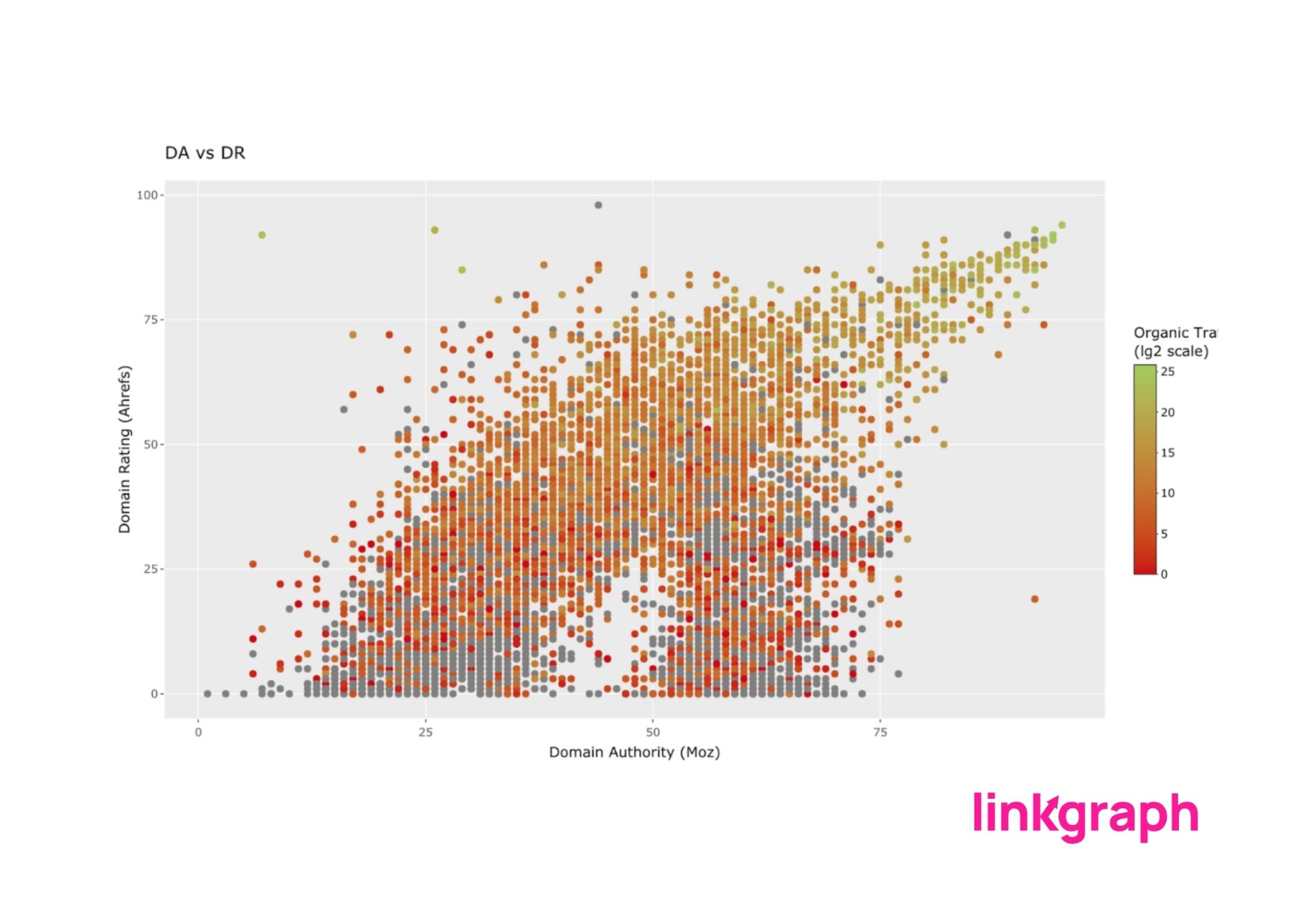
Based on the upward trend, we can make the following conclusions:
- There is a positive relationship between DA and DR scores. As DA scores increase, DR scores tend to increase as well, reflecting that both metrics are relying on similar factors to calculate scores.
- There is a positive relationship with both DA/DR scores and organic traffic. As both DA and DR scores increase, the amount of estimated monthly organic traffic also increases.
Where the data diverts from this trend is the group of domains where DA is significantly higher than DR scores.
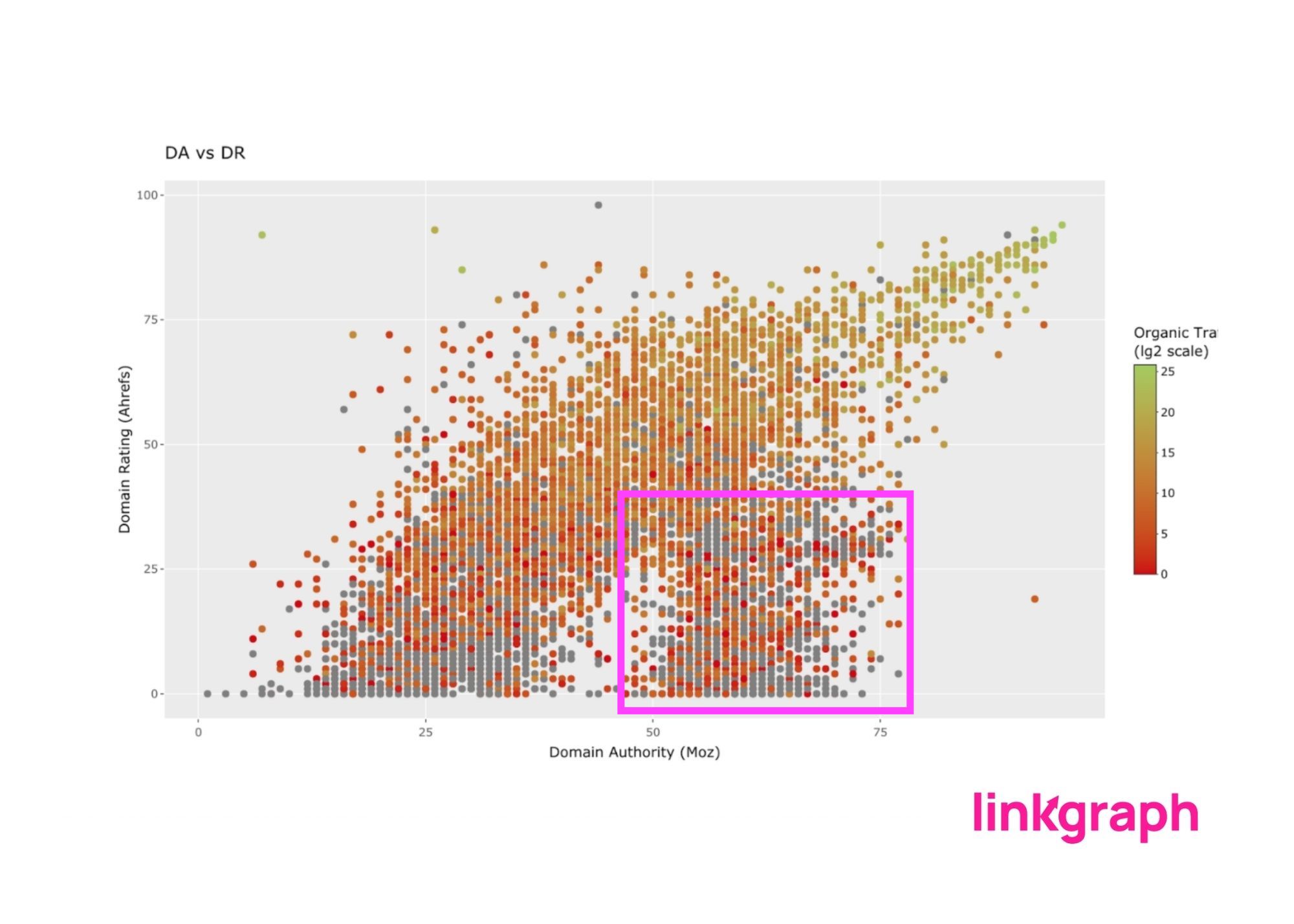
It’s possible that this outcome is due to Ahrefs’ greater emphasis on higher quality links and more authoritative referring domains. It’s possible that Ahrefs does not assign as much value to the links pointing to those domains as Moz does, therefore resulting in higher DA scores but lower DR scores.
Regressions
Regression analysis is a mathematical way to understand whether a variable impacts another. In the below regression analyses, we attempted to isolate DA and DR to understand their unique relationship to organic traffic.
Organic Traffic Explained By DR
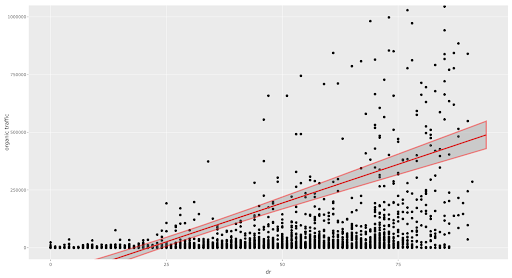
As expected, there is a positive correlation between higher DR metrics and higher organic traffic.
Organic Traffic Explained By DA
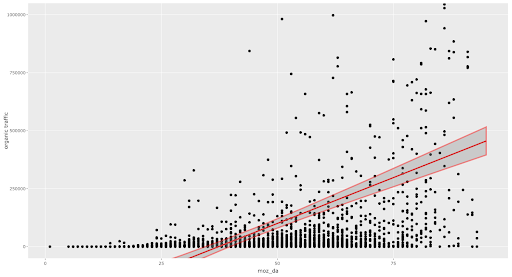
Like DR, higher DA scores also correlate with higher organic traffic. DA showed a slightly stronger relationship with organic traffic than DR, but only minimal.
Final Thoughts on DR vs. DA
When comparing Domain Rating vs Domain Authority, it is clear that both have earned their place in the SEO community as useful metrics to predict improved SEO performance. Both DA and DR have a positive relationship to each other as well as higher organic traffic to a domain.
Utilizing both metrics for comparative and SEO analysis can be beneficial, and increasing domain authority and domain rating scores can have a positive relationship with other SEO metrics like total keyword rankings and increased organic traffic.




















































































